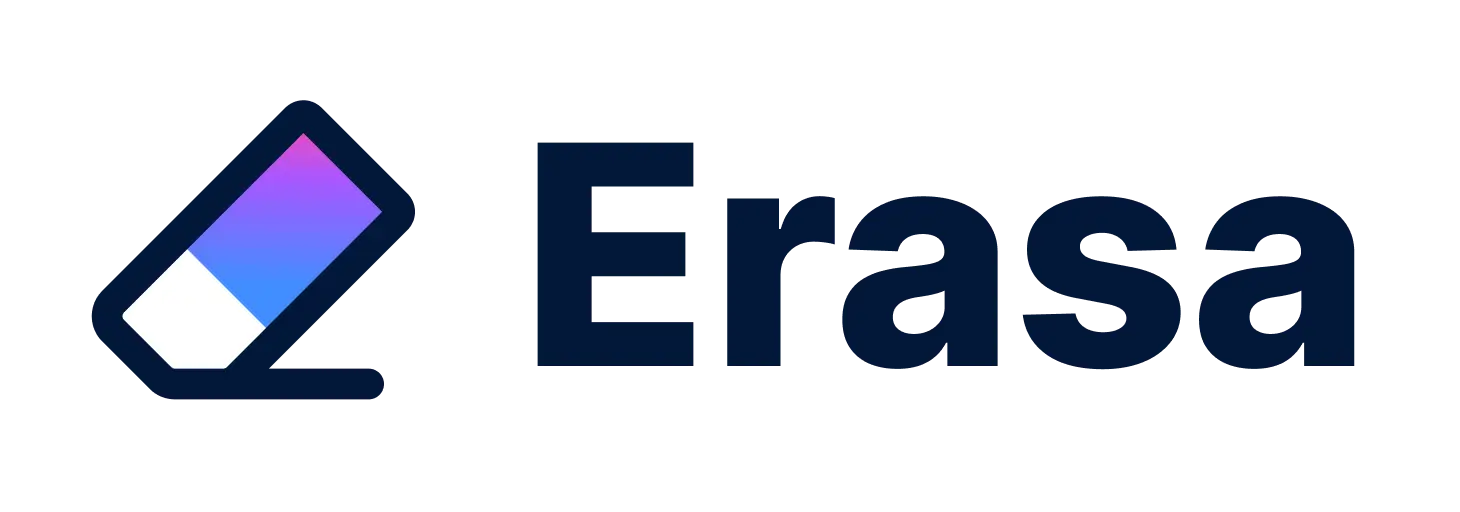¿Cómo detectar imágenes generadas por ai, falsas o robadas en línea
- Introduction: Why This Matters Now
- Step 1 — Identify AI-Generated Images with Detection Tools
- Step 2 — Check If the Image Is Reused, Stolen, or Leaked
- Step 3 — Take Action If Your Image Has Been Misused
- Step 4 — Prevent Future Misuse of Your Photos
- Step 5 — Understand the Difference: AI Detection vs. Image Tracking
- Pensamientos finales - la detección de ia es sólo el principio
- Preguntas frecuentes
- Leer más
Introduction: Why This Matters Now
AI-generated images have become nearly indistinguishable from real photos.
From realistic portraits made by Midjourney to deepfake videos spreading across social media, it’s harder than ever to tell what’s authentic.
But detecting an AI-made photo is only half the battle .
Even genuine images can be reused, stolen, or impersonated across the web — often without your knowledge.
In this guide, we’ll explore both sides:
- How to identify AI-generated images using reliable tools.
- How to find out if your real photos are being reused or leaked elsewhere — and what you can do about it.
Step 1 — Identify AI-Generated Images with Detection Tools
AI-detection tools are the first step when you’re unsure whether a picture is synthetic or human-made. These platforms analyze visual artifacts, pixel inconsistencies, or metadata patterns that often appear in AI-generated images.
Here are some trusted options:
- Hive Moderation – A reliable platform used by developers to detect AI-generated and explicit content. It provides a confidence score indicating whether an image was likely AI-made.
- Sensity AI – Specializes in identifying deepfakes and synthetic media using forensic analysis and image fingerprinting.
- Illuminarty – A browser-based AI detector that highlights manipulated areas or signs of diffusion-generated content.
These tools are helpful for confirming whether an image is AI-generated —
but they can’t tell you where else that image exists online.
And that’s the real problem: whether the content is AI-made or not, it may still be reused or impersonated across multiple accounts and websites.
Step 2 — Check If the Image Is Reused, Stolen, or Leaked
Even if an image is authentic, it might be circulating online without your consent.
Content reuse — from profile impersonations to OnlyFans leaks — is now one of the most common forms of digital abuse.
Use Reverse Image Search Tools
Reverse image search helps you discover where else a photo appears on the internet.
By uploading an image or entering a URL, these tools scan visual databases to match similar or identical pictures.
Popular options include:
- Google Reverse Image Search — The most basic tool, good for general web pages and social media snippets.
- TinEye — Known for tracking edited or resized versions of an image.
- Erasa — A specialized platform built for creators, models, and brands to detect unauthorized reposts, leaks, and impersonation accounts across the web.
Erasa doesn’t detect whether an image was AI-generated — instead, it helps you discover where your real content is being reused, leaked, or copied. With one scan, it can identify lookalike accounts, stolen usernames, and content mirrors across social and adult platforms.
This makes Erasa particularly valuable for creators who have experienced:
- Fake or cloned social media accounts
- OnlyFans or Patreon content reposted without permission
- Their name or face reused in AI-generated fakes
If you’ve ever searched your own photo online and found it somewhere unexpected, Erasa is designed for exactly that scenario.
👉 Try Erasa to see where your photos appear online.
Step 3 — Take Action If Your Image Has Been Misused
Once you identify a reused or stolen image, the next step is to take action.
Here’s how you can respond effectively:
- Collect evidence. Take screenshots of URLs, profiles, and timestamps showing where the content was reposted.
- File a DMCA takedown. Many sites — from Reddit to adult forums — comply with DMCA requests. Erasa provides automated DMCA templates and handles takedown submissions directly for its users.
- Report impersonation accounts. Platforms like Instagram and X (Twitter) allow you to report fake accounts that use your photos or identity. Include reference links to your official profiles for verification.
- Monitor re-uploads. After removal, it’s crucial to continue scanning the web. Erasa’s Brand Monitor and Leak Detector automatically alert you when your content reappears on new sites.
In 2025, removing a single leak isn’t enough — protecting your online identity means building an ongoing monitoring routine.
Step 4 — Prevent Future Misuse of Your Photos
The best protection is proactive prevention.
Here are practical steps to minimize future image misuse:
- Add subtle watermarks to identify original ownership.
- Avoid posting full-resolution images publicly when unnecessary.
- Use Erasa’s monitoring dashboard to detect new leaks or cloned profiles early.
- Register your copyrights or trademarks for added legal strength.
- Track metadata exposure. Tools like ExifCleaner or Erasa’s metadata checker can help you manage what’s shared when you upload files.
By making small adjustments now, you reduce the risk of both AI-generated misuse and unauthorized reposts later.
Step 5 — Understand the Difference: AI Detection vs. Image Tracking
These two concepts often get mixed up — but they serve different purposes:
| Feature | AI Detection | Reverse Image Tracking (Erasa) |
|---|---|---|
| Purpose | Identify if a picture was AI-generated | Find where an image appears online |
| Method | Pixel analysis, neural network forensics | Cross-platform visual and metadata matching |
| Use Case | Spot deepfakes or synthetic media | Discover leaks, impersonations, or content theft |
| Best Tools | Hive Moderation, sensiai, Illuminarty | Erasa Reverse Image Search, Google Lens |
Ambos son esenciales en el panorama moderno de internet:
La detección de ia te dice lo que es falso,
mientras Erasa te dice donde la imagen real está siendo mal utilizada.
Pensamientos finales - la detección de ia es sólo el principio
Los medios generados por ai están remodelando cómo vemos la autenticidad en línea.
Pero para los creadores, marcas y usuarios comunes y corrientes, el problema más importante no es solo "¿Es esto ia?" -
es "¿Quién está usando mis fotos reales, y dónde?"
Las herramientas de detección de ia son útiles para detectar contenido manipulado.
Los pasos de Erasa after that point — to track reused or stolen images, monitor impersonations, and help remove unauthorized content from the web.
Juntos, estos enfoques forman una completa defensa digital:
Detectar la falsificación. Traza lo real. Protege lo que es tuyo.
Preguntas frecuentes
1. ¿Cómo puedo saber si una imagen fue generada por ai?
Utilice herramientas de detección como Hive Moderation o Sensity AI. Busque artefactos comunes como patrones asimétricos o iluminación inconsistente.
2. ¿Qué pasa si mi foto real aparece en otro sitio web?
Realice una búsqueda inversa de imágenes en Erasa o TinEye para localizar dónde se ha publicado. A continuación, puede emitir una solicitud de retirada.
3. ¿Pueden las fotos generadas por ai tener derechos de autor?
En la mayoría de los países, las imágenes generadas por ai carecen de autoría humana, por lo que generalmente no pueden tener derechos de autor.
4. ¿Cómo puedo eliminar falsigeneradas por ai o fotos filtradas?
Utilice el sistema de eliminación de Erasa o presentar una solicitud DMCA directamente con el sitio de alojamiento.
5. ¿Cuál es la mejor manera a largo plazo de proteger mi contenido?
Combine herramientas de detección, seguimiento inverso de imágenes y monitorización proactiva de contenidos con Erasa para crear un bucle de protección completo.
Leer más
1.Where to Find OnlyFans Leak Detection Services (2025)
2.Erasa Upgrade – Find Leaked Content & DMCA Takedowns
3.Best Pornstar Identifier Tools to Find Adult Stars by Photo
A la gente también le gustó
¿Se puede invertir la búsqueda de imágenes de una cara en 2025? Guía completa
Descubra si puede invertir la búsqueda de imágenes en una cara y cómo funcionan las herramientas de comparación de caras, como Erasa, en 2025. Entender por qué Google no puede hacer búsqueda facial y lo que realmente funciona.
Por qué eres Shadowbanned en Twitter (X) - ¿Razones reales
Aprenda por qué su alcance de Twitter (X) cayó repentinamente. Esta guía explica las verdaderas razones detrás de shadowbans y cómo confirmar su estado de visibilidad en cuestión de minutos.
Best Feet Pics Platforms 2025: Safe, Private & Scam-Free (en inglés)
Comparar las mejores plataformas de pies de fotos para 2025. Aprenda a vender de forma segura, mantener el anonimato, evitar estafy proteger su contenido con Erasa.
¿Cómo detectar imágenes generadas por ai, falsas o robadas en línea
Aprende cómo detectar imágenes generadas, falsas o robadas por ai en línea y cómo Erasa ayuda a rastrear fugas, suplantación de identidad y uso indebido de contenidos.
Dónde encontrar los servicios de detección de fugas de lyfans (2025)
Descubra los mejores servicios de detección y eliminación de fugas de unlyfans en 2025. Comparar Erasa, Rulta, DMCAForce, y más para proteger su contenido y los ingresos rápido.
¿Quién puede ayudar a eliminar el contenido filtrado que sigue apareciendo?
"Descubre quién puede ayudar a eliminar el contenido filtrado que sigue regres. Comparar herramientas de confianza como Erasa para detener reuploads y proteger su privacidad."
Cómo enviar un desmontaje DMCA (guía 2025 + plantilla gratuita)
Aprenda cómo enviar un desmontaje DMCA en 2025 con una guía paso a paso, plantillas de correo electrónico y consejos profesionales. Elimine rápidamente el contenido robado con la herramienta DMCA de Erasa.
Brand Monitor Tools in 2025: Benefits, Features & Why They Matter (en inglés)
Descubra cómo las herramientas de brand monitor protegen a las empresas en 2025. Conozca los beneficios, las características y por qué Erasa se destaca con la monitorización con tecnología ai y los derribos instantáneos.
DMCA Takedown Request: Bulk Content Removal Guide (en inglés)
Aprenda a presentar solicitudes de retirada de DMCA, detectar contenido robado y eliminar cuentas falsas con herramientas de eliminación automatizadas y supervisión masiva.
¿Qué pasa si alguien filtra tus fotos privadas? eliminrápido
¿Te preocupa qué pasa si alguien filtra tus fotos privadas? Aprenda cómo denunciar, eliminar y proteger el contenido filtrado con medidas legales, técnicas y preventivas.
25+ pies Picture Ideas: Poses creativas y consejos de Instagram
Descubre más de 25 pies creativos ideas de imágenes con consejos de poses, estrategias de crecimiento de Instagram, orientación de precios y formas de proteger su contenido del robo. Perfecto para fotógrafos, influencers y creadores.
Encontrar cuentas robadas con identificde estrella porno (2025)
Analice sus fotos con herramientas de identificación de estrellas porno para detectar cuentas robadas, rastrear fugas de fans y proteger su contenido utilizando la búsqueda inversa impulsada por ai.






